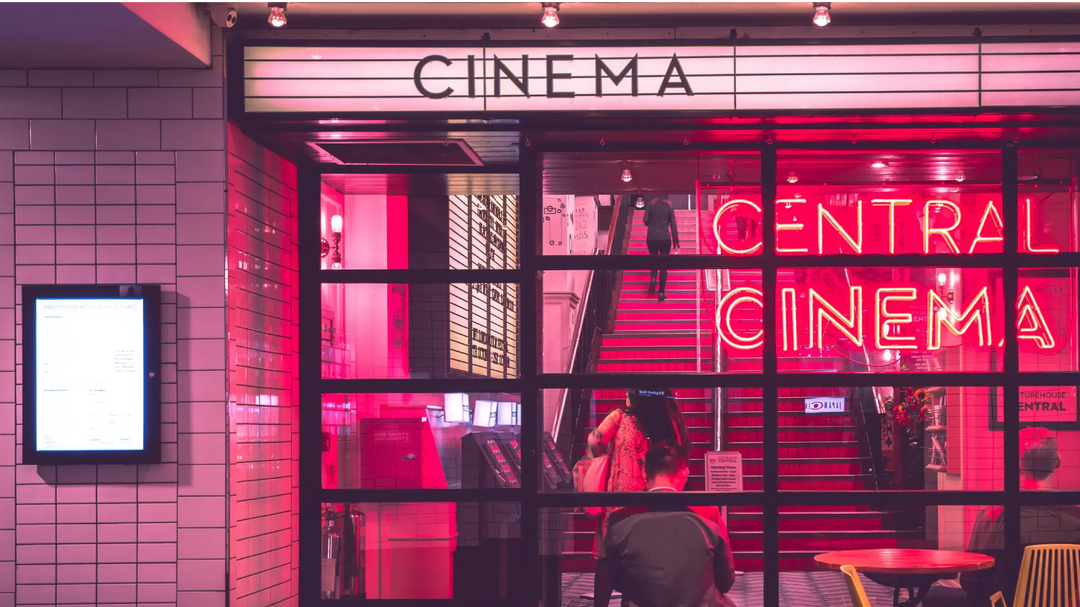LWL | Behavioural Economics & Social Media: To what extent does the consumption of content on Instagram Reels affect the consumer behavior and spending patterns in the Gen-Z demographic?
Abstract
My research explores the impact of Instagram Reels on the everyday lives of the Gen-Z demographic, especially their consumer behavior and spending patterns. My research includes surveys and other papers which share a similar topic to analyze the extent of how Instagram Reels affect the modern generation. In an age where you can order a PS5 off of an app within five minutes, the aim of my research is to understand if the spending and consuming habits of Gen-Z are as bad as they are portrayed to be. Instagram Reels is no doubt influential, but there are definitely both good and bad aspects to the effect it has on this demographic. I hypothesize that the younger generations (Gen-Z) would be more likely to buy off the platform, and hence would spend a large portion of their allowance on the same.
Thesis: Instagram Reels & Marketing
Platforms such as Instagram Reels, TikTok and Facebook have been very integral for this new age of marketing, wherein the algorithm favors short-form content, and pushes that type of content to a larger audience1. This is not only done via the official accounts of corporations on these platforms, but also through “influencers'': users who have a high follower base, which can be utilized to influence them into buying certain products.
Not just restricted to the two methods above, corporations can also pay for ad spaces on these apps as well— Instagram and Facebook offer special tools for advertisers to promote certain material/content on their platforms.
At the end of my research, I predict that those who are Gen-Z consumers of Instagram reels spend more on the products advertised on there than those who are significantly older. To test my hypothesis, I decided to conduct a survey.
In this survey, my main objective was to contrast between those who mainly used Instagram Reels and spent more of their budget on buying possessions than on savings with those who did neither. I hypothesized that respondents who spent a larger proportion of their time on Instagram Reels would spend higher on buying the item advertised on the app, compared to those who do the opposite.
Behavioral Economics
Behavioral economics is a branch of economics that is closely intertwined with psychology and studies consumer behavior patterns: rational/optimum choices, and their connection with the information available to the consumer.
One such theory, called Nudge Theory, is relevant to my research; Nudge theory is manipulation of the consumer to buy or to consume a certain good/service, without any incentives2. For example, stores may make fruit more accessible than junk food in an effort to nudge consumers to buy the fruit. The consumer buys a healthier good, without any incentive to. This same theory can be applied to Instagram Reels, wherein consumers are shown advertisements for different products as soon as they open the app, nudging them to click on links that allow them to buy the goods or services.
Another theory that is quite important for my research is Maslow’s Hierarchy of Needs. Albeit not an economic theory, the pyramid diagram of the same helps one justify purchases in accordance to their physiological needs, safety needs, etc. 3
And the last theory that I’ll be using to explain the consumer choices and spending pattern is the theory of Bounded Rationality, which refers to the fact that consumers are often limited by their availability of the information (required to make a rational purchase decision), the costliness of acquiring that information, and also the limitations of the cognitive ability to process large amounts of information at one go.4
Research & Analysis: Google Form Survey
This survey was distributed to a large number of applicants, ranging from younger ages to older ages, and the medium for this survey was through a Google Form. The form stayed active for four days, wherein the applicants could not edit their responses after submitting. The mean age of the applicants was 33 and the survey received 74 responses. Of these responses, approximately 27% admitted that they have purchased from Instagram shops, with most being satisfied with the quality of the products they have received. Again, from the 27%, only 25% of the Gen-Z respondents admitted that they have purchased from the platform. On the contrary, the older demographics that responded to the survey spent a higher proportion of their monthly allowance/income whenever they purchased from Instagram shops, and also had high consumer satisfaction.
One reason for my hypothesis to be proved wrong is Maslow’s Hierarchy of Needs, wherein it was believed that people were the most motivated and productive when their physiological needs, safety needs, love & belonging needs, esteem needs and self actualization needs were met adequately. Instagram shops particularly fall into the physiological needs; people often buy from these types of shops because they offer unique products that often cannot be mass-produced (such as crocheted items, handmade bracelets, etc.), which draws them in further. Although officially physiological needs are defined to be basic needs, a lot of the time a rational human being would not just satisfy the basic human needs, but also the external wants and pleasures that come from a higher income/allowance. However, one drawback of using this theory is that it was first used to describe patterns of motivation in workers in the mid-1900s, which may not be as relevant in today’s day and age. Additionally, it is also quite possible that many buy these products as an ‘impulse purchase’, and not as a genuine want or a need. Even though Maslow’s Hierarchy of Needs is a good reasoning to explain why a rational consumer does what they do, it may not be ‘updated’ enough to keep up with the evolving generations.
Another reason for my hypothesis being wrong is also Nudge theory. Nudge theory, at its core, is a psychological manipulation tactic where items that are to be promoted are placed at the eye-level, or in this case, on the users’ for you page (FYP). Considering that most of Gen-Z scrolls past advertisements (something that me and my peers have experienced myself), most of the older generations don’t. Because of this slightly different reaction to seeing adverts on a social media app, the older generations were more susceptible to clicking on advertisements that they watched, compared to Gen-Z, which as a whole has no interest in advertisements. By utilizing Nudge theory by strategically showing more adverts when you open the app makes it more accessible for the average consumer to notice products and be convinced to buy them as well. Such actions taken by advertisers (and sometimes Instagram themselves) nudge the consumers to perform actions they otherwise would have no incentive to do. One downside of this theory, however, is that the Instagram algorithm can be quite unpredictable at times, and getting the users to do the right (or rather, the predicted action) can be quite hard. Sometimes, nudge theory can also be used in the wrong way, wherein users are manipulated to buy things that may not be beneficial to them, or even a scam. Also, it need not always be nudge theory in action: a lot of the times, Instagram draws advert results from searches, which may show the user items that they were already looking for, disputing this theory as a whole and raising the probability of them clicking on the advert.
At last, the economic theory of bounded rationality also comes into play. Bounded rationality refers to the consumer’s limited cognitive capacity to process knowledge at a fast pace, leading them to make decisions that may not necessarily be very informed or, in other words, rational. The adverts shown on instagram often don’t contain the full information required by the user to make an informed decision, or contain too much information to process in a short amount of time. This is very evident by the content shown on Instagram Reels, which is so distracting that the content has been proven to decrease the attention span of those who watch it.5 When the information is delivered too fast, the consumer is overloaded with information and won’t be able to make a rational decision compared to a consumer who is given information at a slower rate. Reels with sped up music, flashing graphics and fast-moving animation overwhelm the cognitive system of the consumer, and hence the consumer wants to make more impulsive choices and decisions. There is fault from the users’ side as well; this is taking time to process 5(Harrison & Himelstein, 2023) information, or finding out additional information by yourself is a costly process (costly in the sense of spending more time on things that we usually don’t), which causes users to settle for average products compared to the most optimal choice. One reason that the theory of bounded rationality may not work on the younger audience is because younger generations take their time to research about the product they’re being advertised, in contrast to those who are Millennials or even older, since they are more susceptible to scammy marketing: many a times, scams usually market to older demographics in order to take advantage of their limited cognitive capability, compared to Gen-Z.
However, it is important to keep in mind that these theories have been developed without a complete understanding of human behavior (psychologically we know very little about how the brain functions, and everyday we find out something new via research), and most likely will not apply to the general public because of how wide the range of human actions is, and how different everyone is cognitively.6 Additionally, the theories mentioned above may successfully coerce users into buying items impulsively, but they also may not be a good reflection of their true thoughts and choices. A lot of the time, Instagram Reels also display scams– many would find it distasteful to manipulate consumers, not keeping in mind their best interests. Utility, as a whole, is the utmost thing to any consumer (without them even knowing it), and to capitalize on the average unknowing consumer is inherently wrong. Finally, no consumer ever behaves rationally, even though a lot of the theories predict how a rational consumer would act; especially the case with nudge theory and Maslow’s Hierarchy of Needs, the theories talk about how a rational consumer might act when exposed to different situations and circumstances. These theories do explain how humans would act, but the different limitations and impositions make it difficult to apply it everywhere, and make it reliable.
Another thing of note here is that the survey that I had distributed may also not be perfect. To start off with, the survey was not distributed to a large sample size, and was kept confined to 74 participants which may not be indicative of all the populations in my area or anywhere else. Secondly, since the medium of the survey was through Google Forms, the sample is restricted to those who have a Google account, and have access to a phone to answer the questions that I had included. Although I did my best to include questions that may yield me the most accurate results to work with, sometimes the questions can be misinterpreted by those who answer it, where incorrect or untrue answers may be submitted. Lastly, taking into consideration that the mean age of the participants was 33, the distribution of demographics is surely unbalanced, where most of the answers were from Millennials. If maybe a larger sample size was utilized, the answers would be more accurate and more true to the thoughts of the larger population.
Conclusion
To conclude my research, my initial hypothesis was proven wrong by the survey I conducted: I went in with the preconceived notion that since Gen-Z is more active on the app, they would be more exposed to the adverts on Instagram Reels, and hence would buy many products that were either advertised by the app or from the app itself. However, it turned out to be the older demographic, Millennials and older, that were buying from the platform (usually items like clothes, accessories, and shoes). The above theories, Maslow’s Hierarchy of Needs, Nudge theory and the theory of bounded rationality try and explain the motives and the strategies a rational consumer would apply, but fail to take into account the fact that there are downsides, namely that most consumers don’t have homogenous actions, and are rather unique with their thought processes and how they react to different stimuli.
Works Cited
Bhushan. (2023, July 13). The Impact of Shorts and Reels on Attention Span: Strategies to Enhance Focus. Medium. Retrieved June 22, 2024, from
https://medium.com/@kbhushan19/the-impact-of-shorts-and-reels-on-attention-span-strat egies-to-enhance-focus-81dcb9461a3
Cozma, I. (2024, May 24). Short-Form vs Long-Form Video Content: EXPERT Tips to Choose the Best Format for Your Marketing Goals. inBeat Agency. Retrieved June 23, 2024, from https://inbeat.agency/blog/short-form-vs-long-form-video-content
Harrison, T., & Himelstein, T. (2023). Short videos, shorter attention. The Lowell. https://thelowell.org/14372/uncategorized/short-videos-shorter-attention/ Hoang, P. (2022). Business Management 5th Edition. IBID Press.
Lam, V., Moskal, E., & Conley, M. (2016, November 8). "We know very little about the brain": Experts outline challenges in neuroscience. Stanford' SCOPE. Retrieved June 23, 2024, from
https://scopeblog.stanford.edu/2016/11/08/challenges-in-neuroscience-in-the-21st-centur y/
Tragakes, E. (2020). Economics for the IB Diploma Coursebook with Digital Access (2 Years). Cambridge University Press.
Witynski, M. (n.d.). What is behavioral economics? UChicago News. Retrieved June 22, 2024, from https://news.uchicago.edu/explainer/what-is-behavioral-economics




